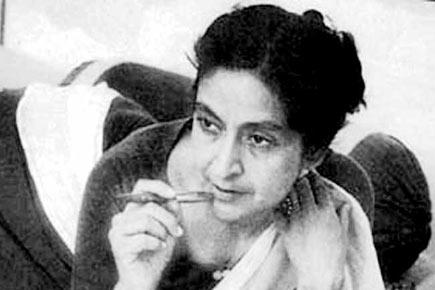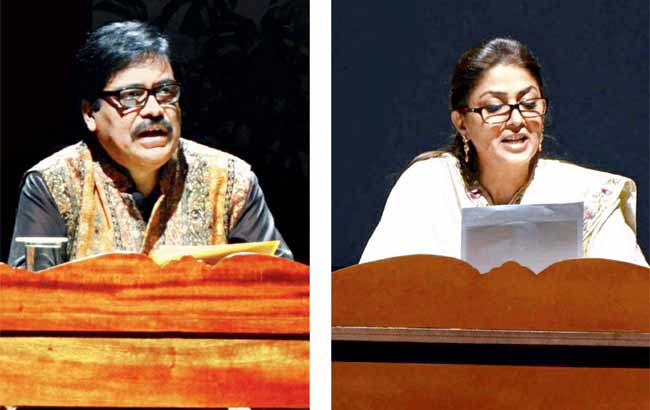A new act celebrates Amrita Pritam with excerpts from her biography, her letters to Imroze, poems and short stories juxtaposed with writings by Saahir Ludhianvi and others

Salim Arif and Lubna Salim at an earlier performance of Main Tumhe Phir Miloongi
Termed as the goddess of defiance, a rebel and a revolutionary, who lived her life with intensity, Amrita Pritam has been an admirable influence not only on Punjabi but also Indian literature.
ADVERTISEMENT

(From left to right) Salim Arif and Lubna Salim at an earlier performance of Main Tumhe Phir Miloongi
Says writer and director of Main Tumhe Phir Miloongi, Salim Arif, “A lot has been written about Amrita Pritam. There have also been a lot of misgivings about her relationships. The most common link-up was the one with poet and lyricist Sahir Ludhianvi. I don’t think she has been represented properly so, I wanted to change that.

Amrita Pritam
Her relationship with renowned artist and writer Imroze is what I find extremely fascinating. Imagine living with someone knowing they are in love with someone else. They lived under one roof, never said the words ‘I love you’ to each other but still stayed together for so long.”
He adds that the play focusses on the time span of the late 1950s to the early 70s — from the time they started living together. “Their correspondence forms the basis of the play”, he explains.
A versatile talent, who penned poems, novels, short stories, essays, and autobiographies, Amrita Pritam is best remembered as one of the most popular writers who played an active role in the Progressive Writers Movement, the influence of which could be seen in her works.
Her autobiography, Raseedi Ticket, remains one of the most read books, and is also one of her most controversial works, which has been translated into several Indian languages.
The play is named after the famous Punjabi poem Main Tenu Phir Milangi, which she wrote specially for Imroze.
“This play is not a work of fiction. I have scripted it from love letters of Amrita and Imroze, Raseedi Ticket and other sources.
hese are rare letters that were not part of her autobiography, and were published much later,” sums up Arif.
 Subscribe today by clicking the link and stay updated with the latest news!" Click here!
Subscribe today by clicking the link and stay updated with the latest news!" Click here!






